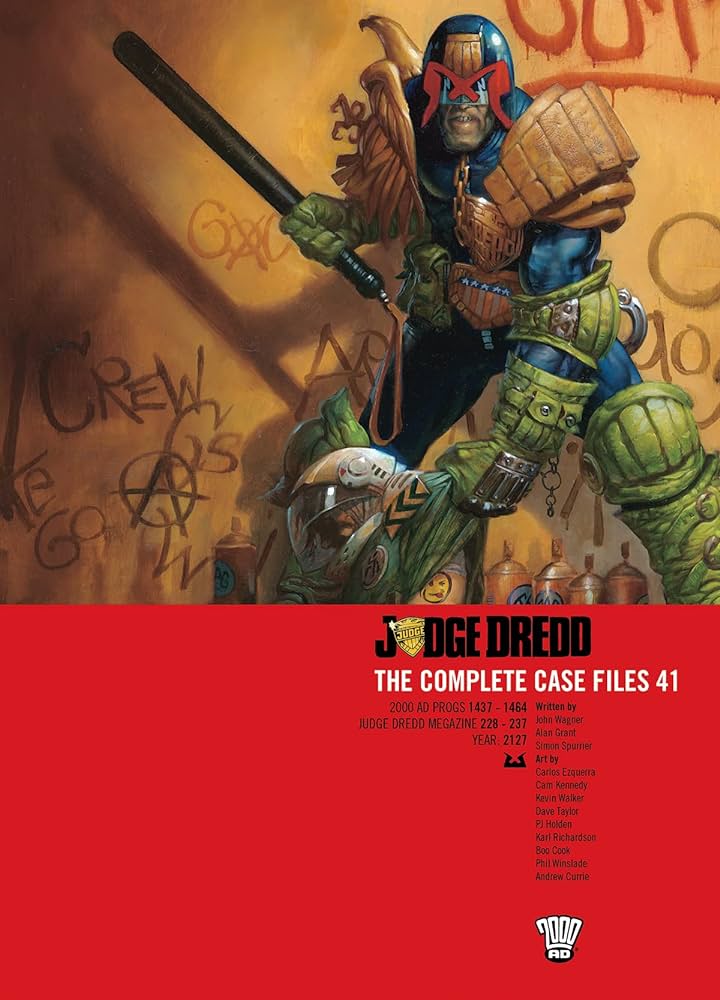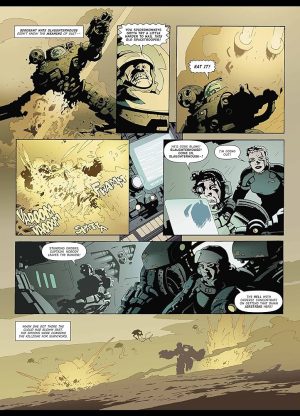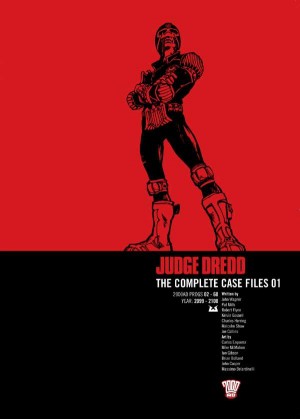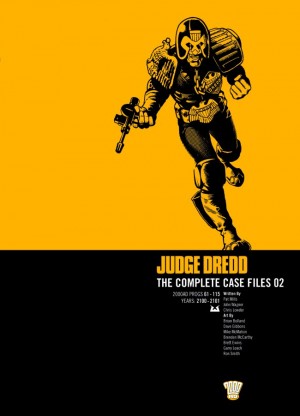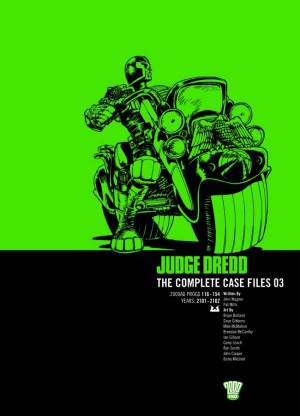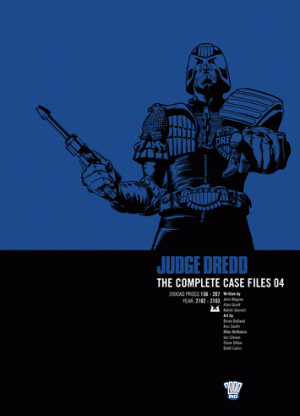Review by Roy Boyd
The Complete Case Files 41 opens with three-part ‘Radstock,’ written by Gordon Rennie and illustrated by Karl Richardson. It doesn’t happen often, but this is an occasion of an artist being a poor fit for the jokey script. Other than that, it’s okay without offering anything we haven’t seen before.
Rennie writes the next story too, the ten-part ‘Blood Trails.’ Andrew Currie’s art is like Alan Davis meets Ian Gibson, if you can imagine such a thing (if you can’t, read this). The George Clooney photo-references are sometimes too obvious, and it looks like Currie spent time drawing caricatures, but his work is impressive. The Sovs send another assassin after Dredd – will they never learn? – and his evil scheme is to romance and then kidnap Dredd’s niece. The story packs a fair wallop, with a couple of recurring characters dying or coming close.
A Comics Journal critic once said Judge Dredd works so well partly because it avoids the soap opera plots of most American comics. So, when they involve Joe’s family in stories, it actually means something and isn’t merely long-lost-evil-twin-brother-of-the-week stuff. Though, to be fair, Dredd does have an evil twin brother.
‘Caught in the Act’ is a two-parter written by John Wagner, with art by Phil Winslade. The story is basically a mash-up of Franz Kafka’s The Trial and George Orwell’s 1984. Wagner portrays the judges as psychotically inept fascists, which sits oddly with most of his stories, which are usually more sympathetic.
‘Matters of Life and Death’ by Rennie and Carlos Ezquerra is a single-parter. Dredd takes Giant out on the streets to confirm he’s fit to return to duty after recovering from injury. As another piece of fallout from the same episode, Vienna deals with difficult news.
‘Mandroid’ by Wagner and Kev Walker is the longest story in the book, at around 70 pages. Grim and gritty, with shades of Michael Winner’s Death Wish, this features atmospheric and assured art (see sample) and an action-packed plot that’s classic old-school Dredd. Great stuff!
The five 2000 AD stories are followed by a handful of tales from Judge Dredd Megazine.
‘Who? Dares Wins’ by Wagner and Cam Kennedy is a mere two parts (still a respectable 24 pages), but superb, with outstanding art. It’s genuinely funny, and includes an unusually upbeat ending for the hapless Cal-Hab resident, a character that always delights with his too-infrequent appearances.
‘Judging Ralphy’ is Wagner’s second in a row to feature a blast from Dredd’s past. Dave Taylor does a stellar job drawing this one-parter that, like ‘Mandroid,’ features a vigilante dispensing justice, this time dressed as a Judge.
Wagner’s final story here – ‘The Monsterus Mashinashuns of PJ Maybe’ – teams him with Dredd’s other co-creator, Ezquerra, for a four-parter starring another recurring character, one who has plagued Dredd for decades. The death toll mounts as Maybe plays cat-and-mouse with Dredd while executing his ever-so-complicated plan, but the story doesn’t offer anything previous Maybe stories haven’t already supplied.
The book ends with ‘The Magnificent Umbersons’ and ‘In the Stomm’, a couple of amusing shorts.
This is a solid and well-balanced mixture of comedy and serious stories. ‘Mandroid’ is best, though it’s competing for that accolade with the excellent Kenny Who? tale. Finally, credit boxes, ‘Judge Dredd’ and in-story titles have been reinstated, at least for the first part of each story. That’s all we ever wanted. So they’ll probably drop them again next time.
